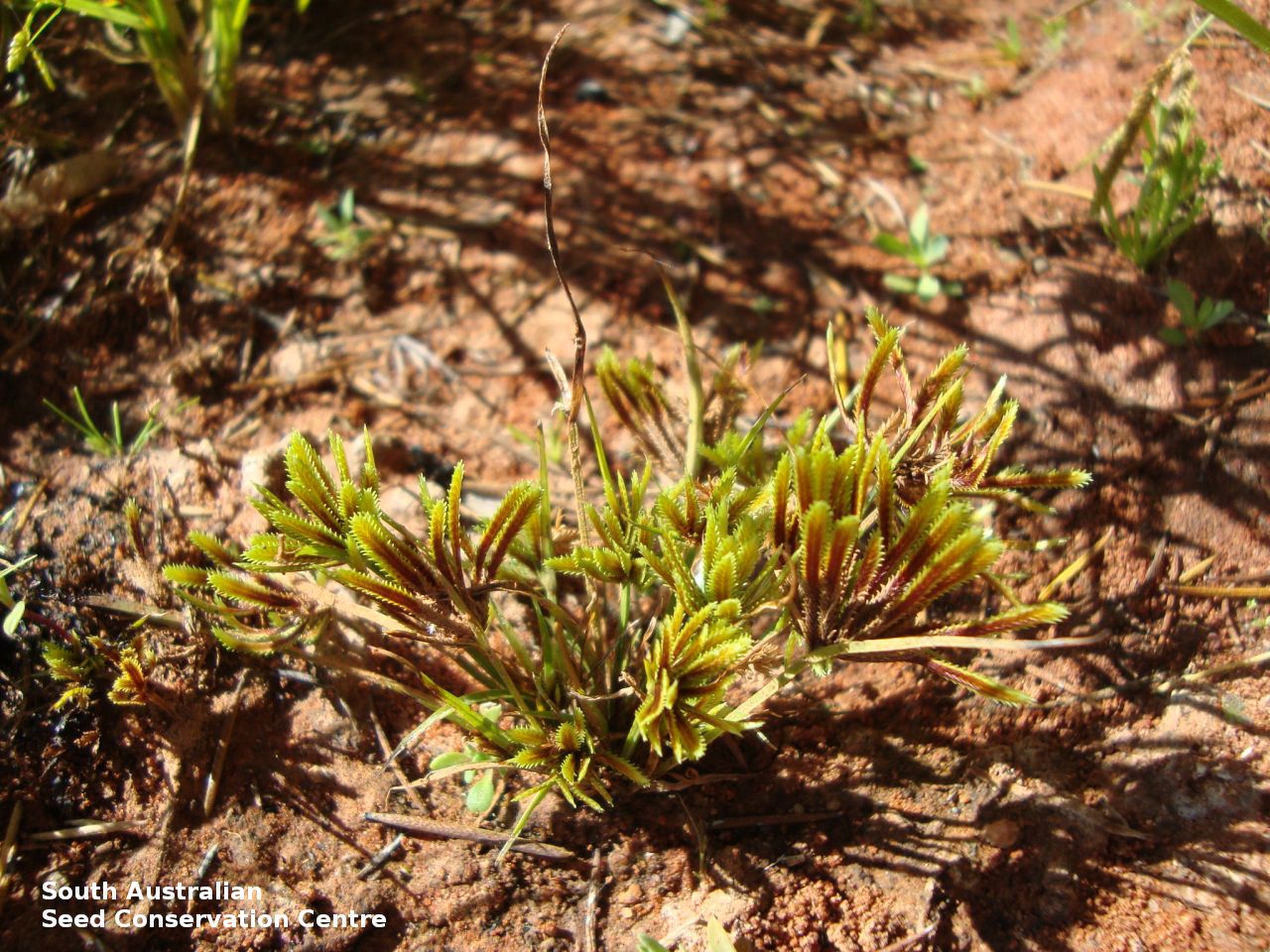
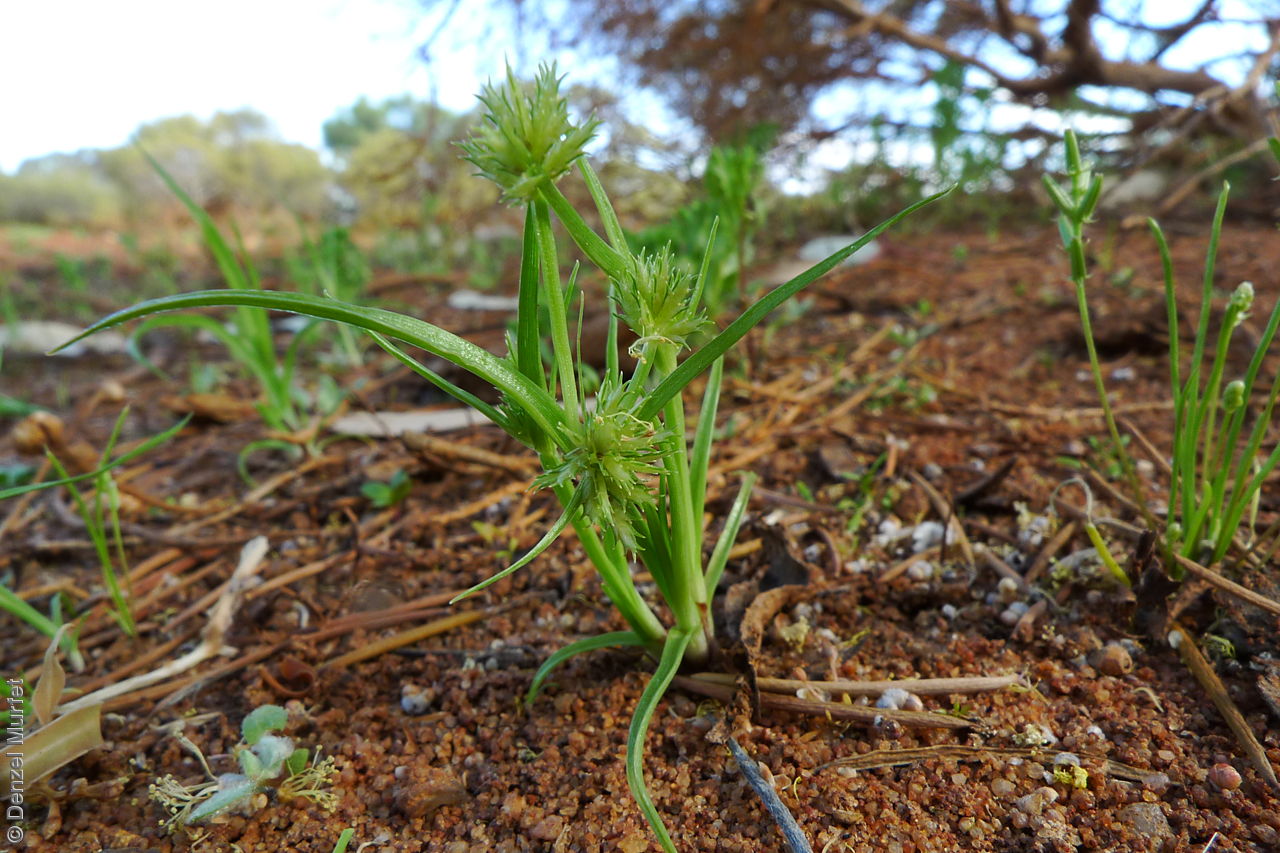
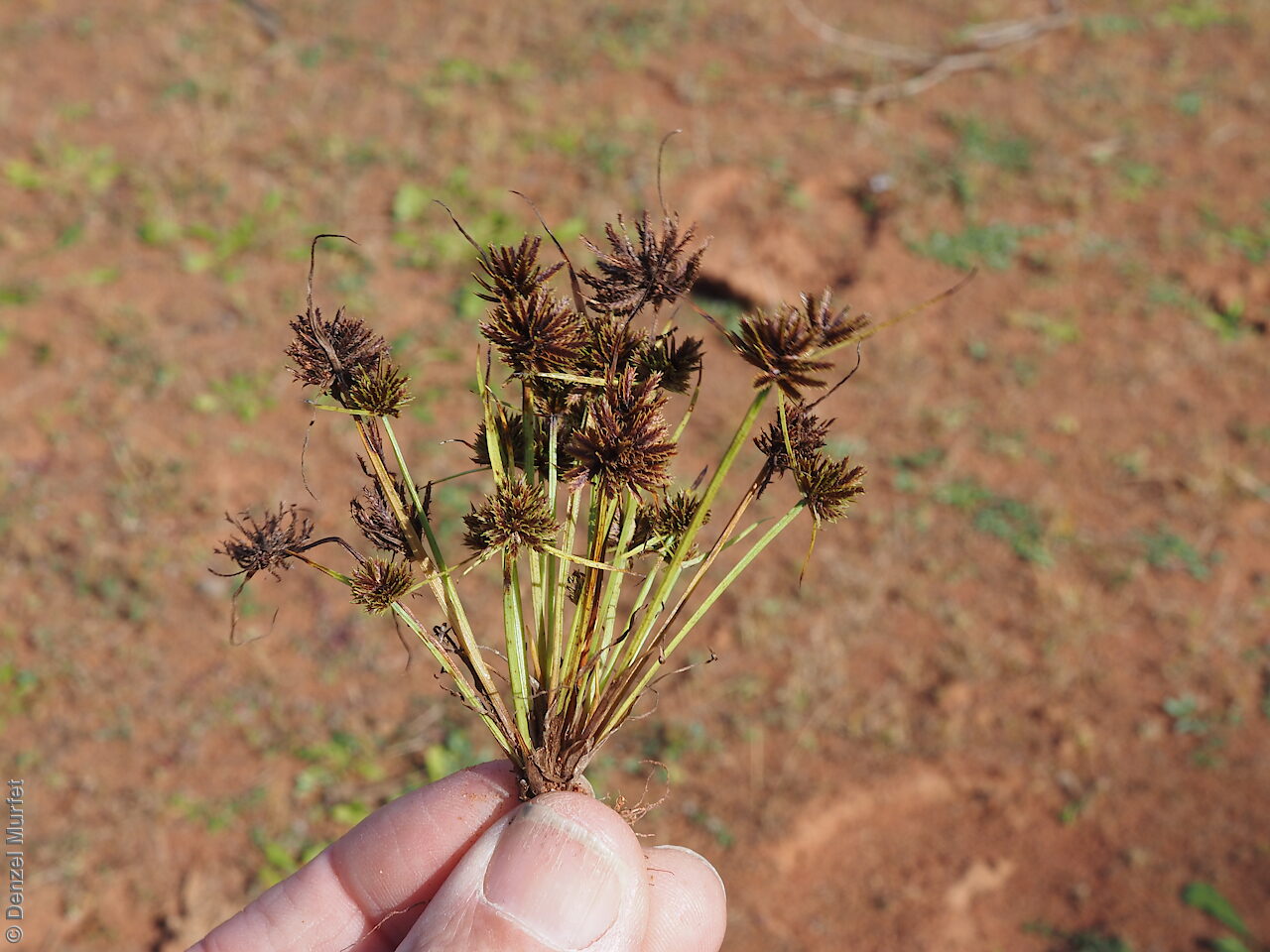
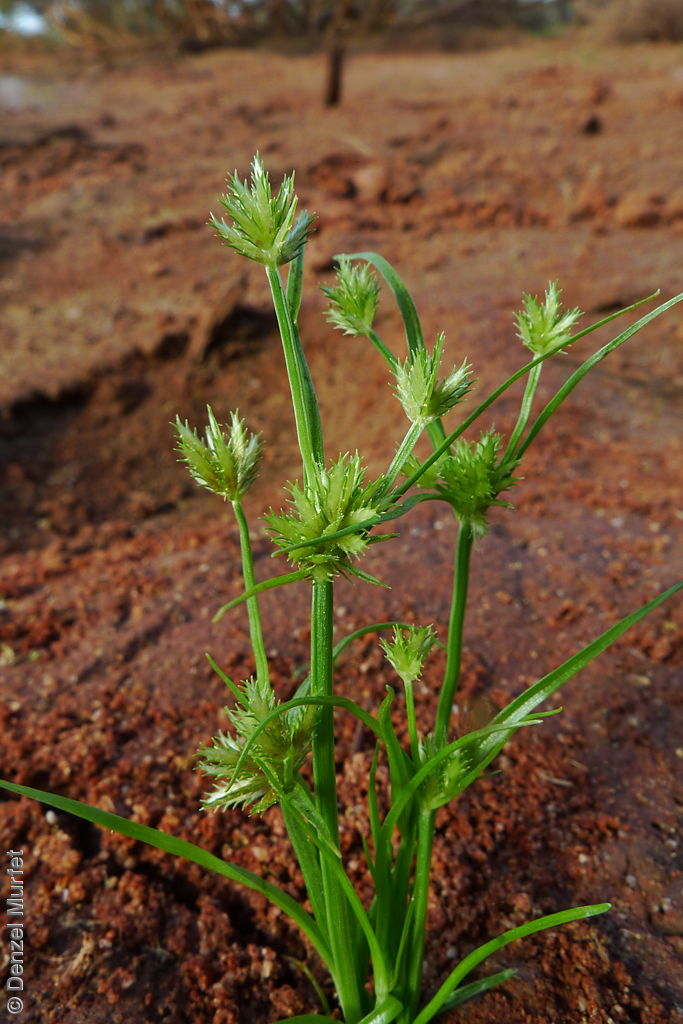
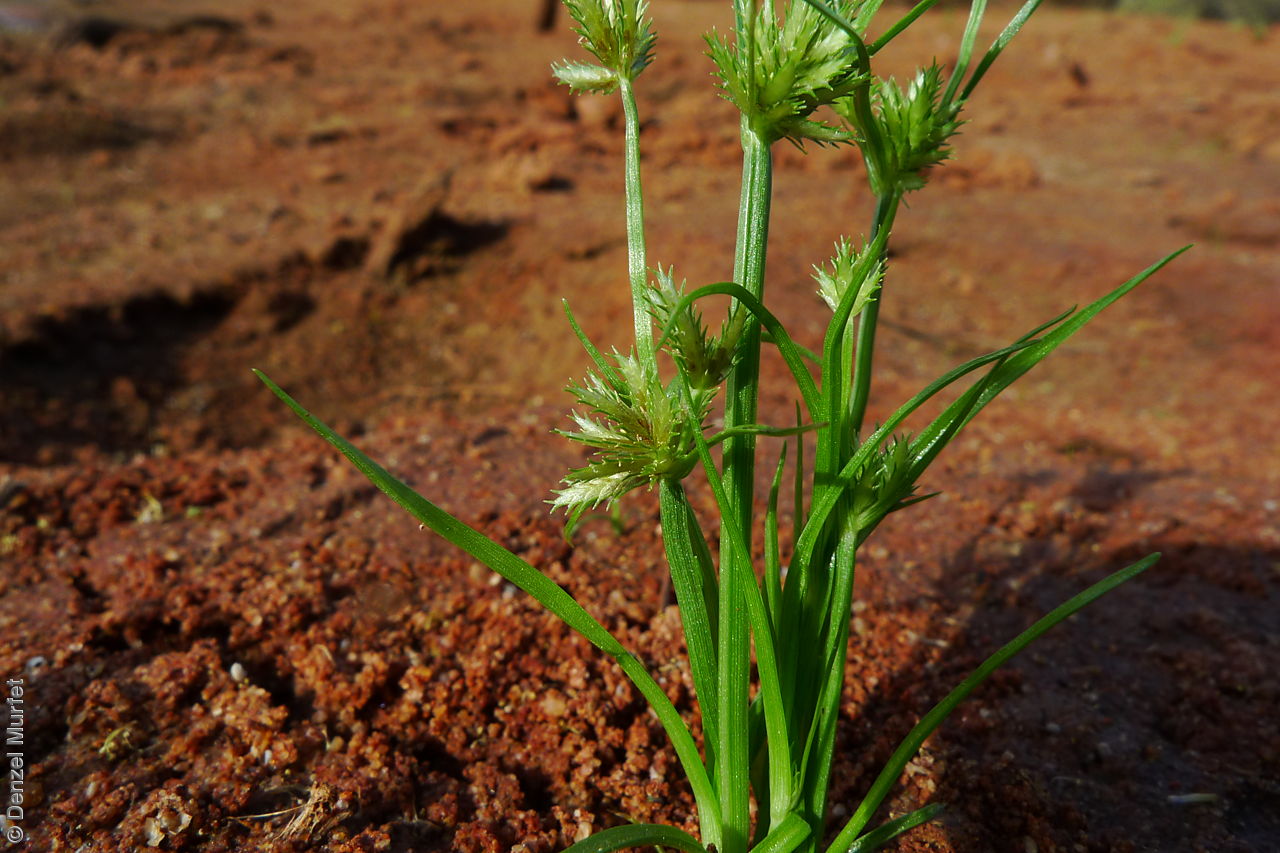

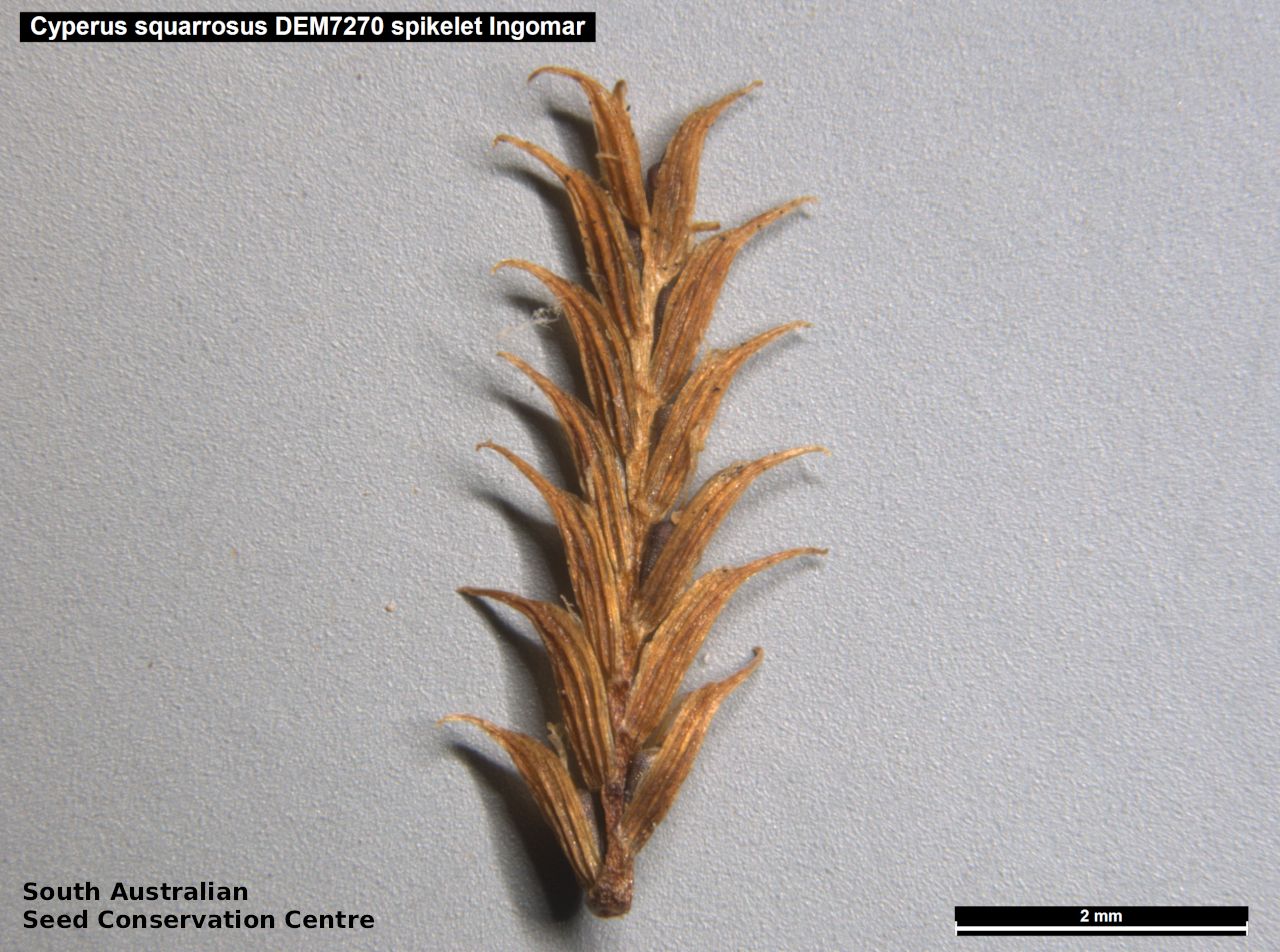
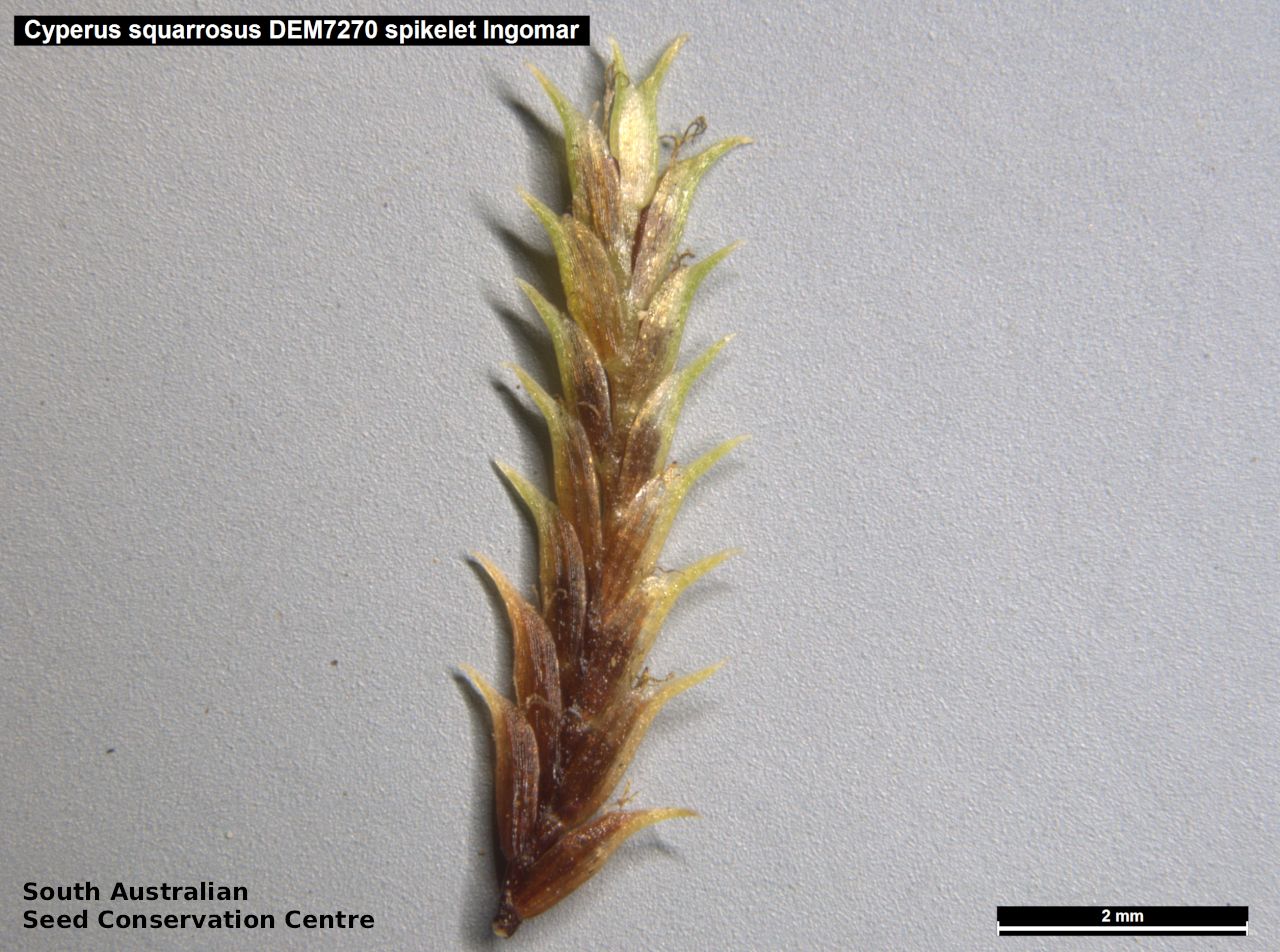
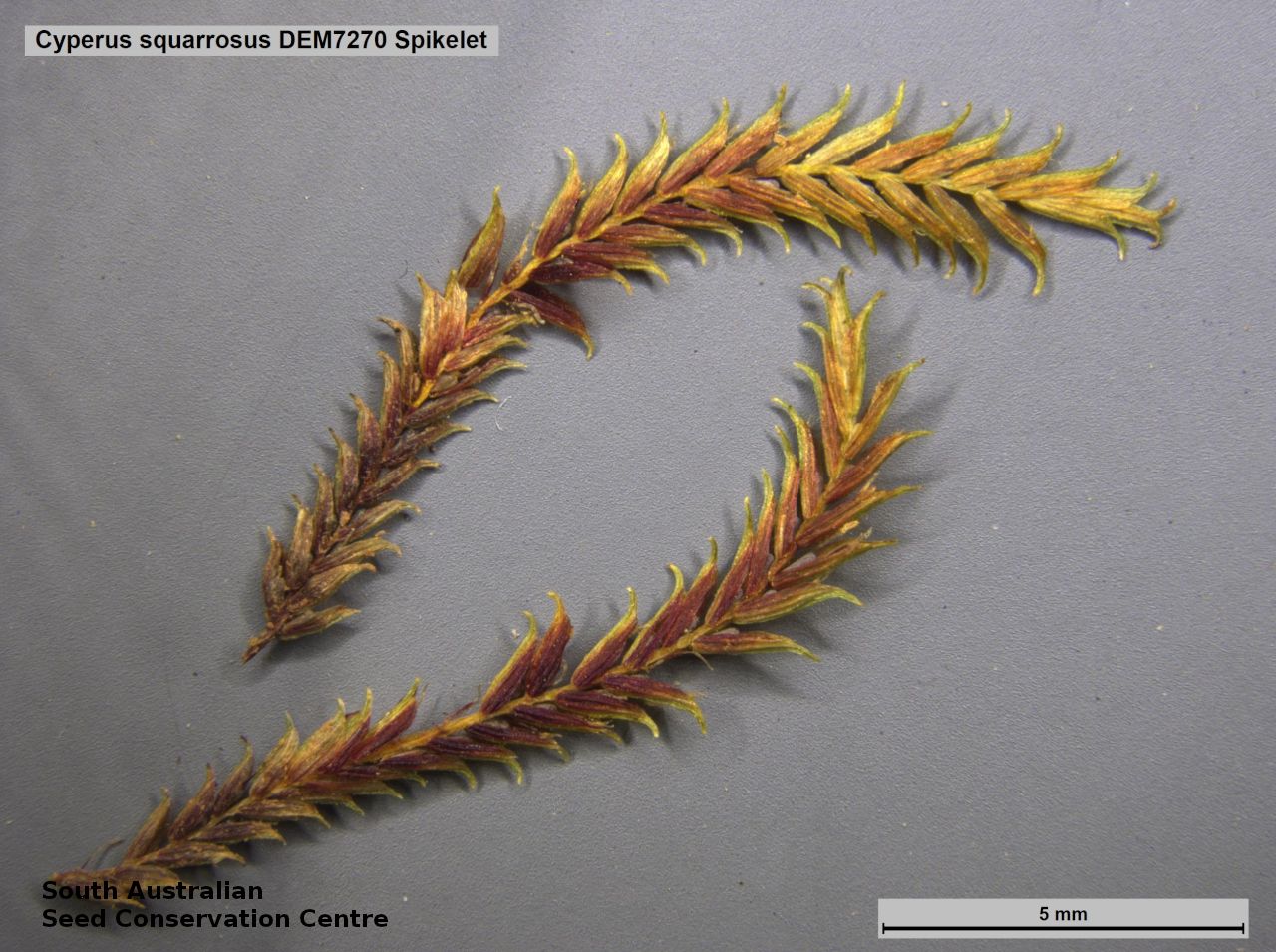
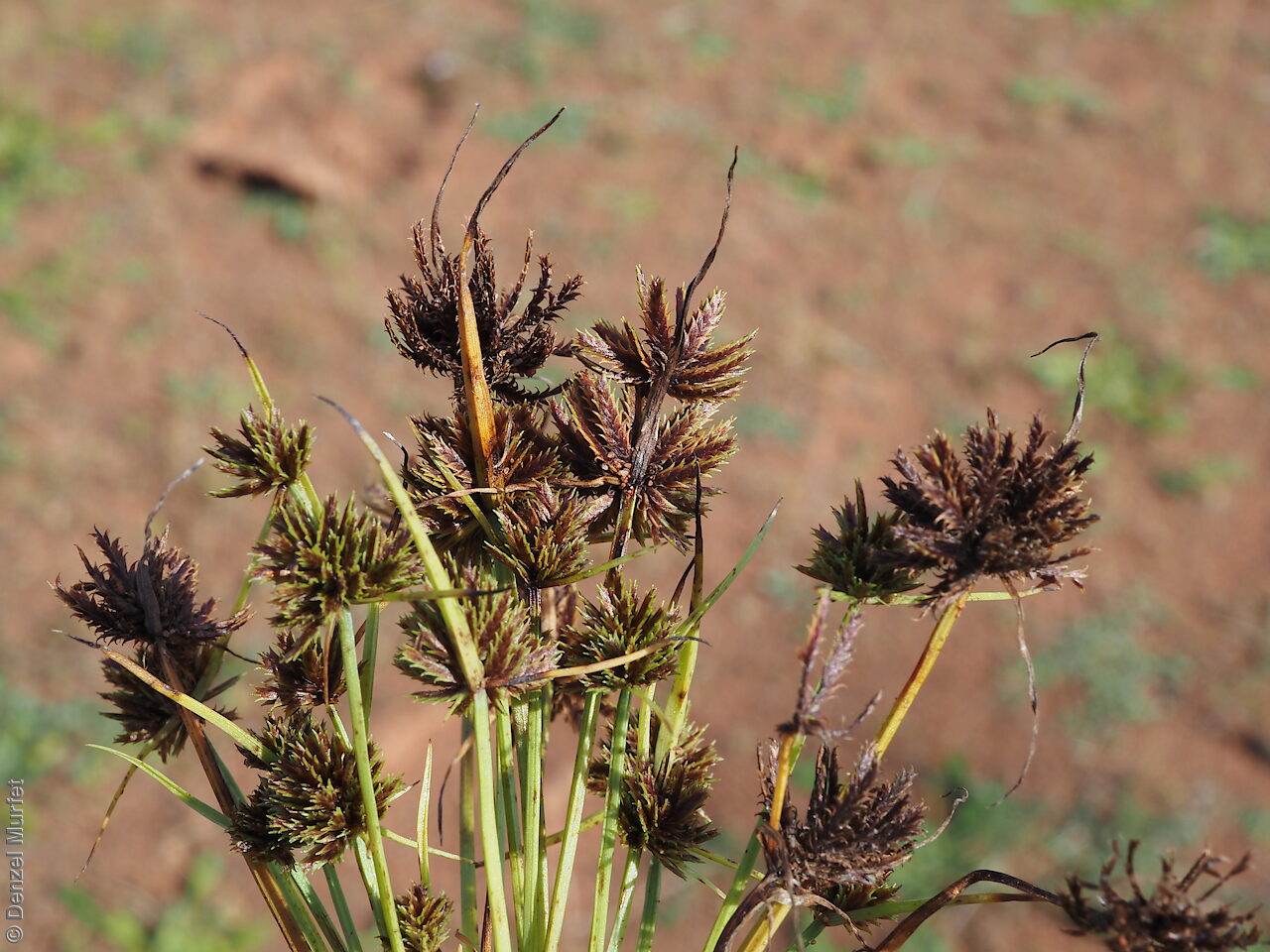

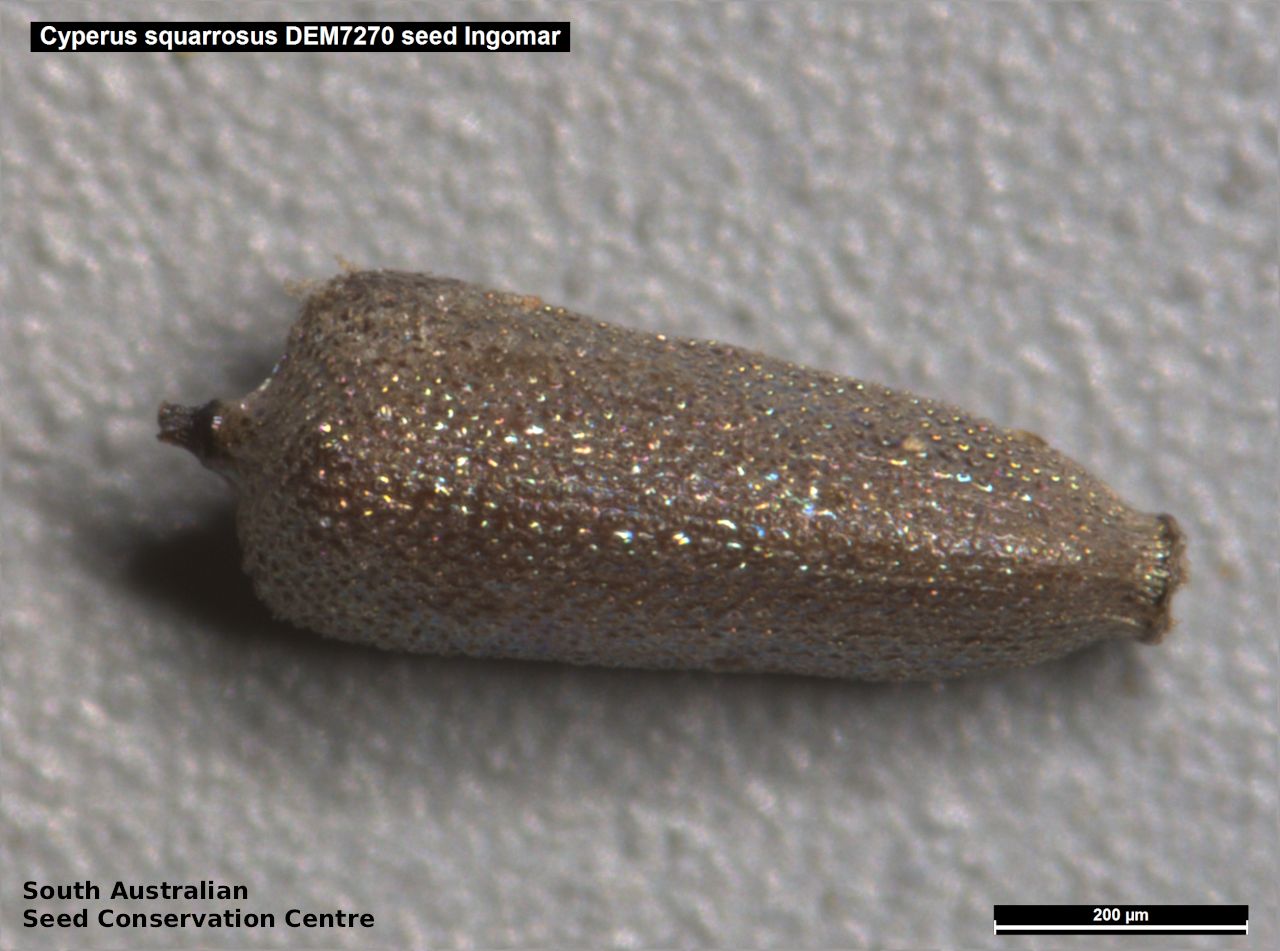
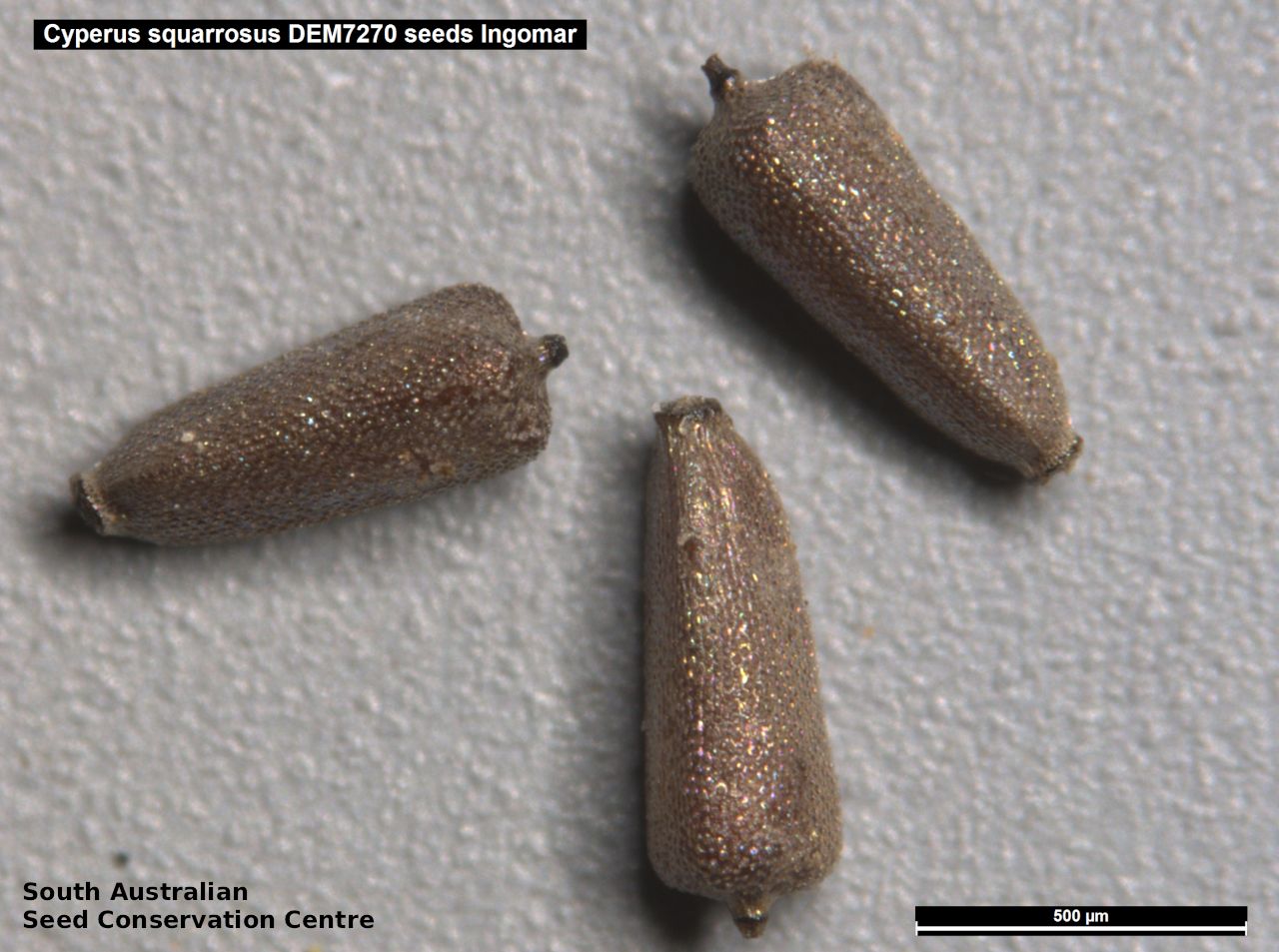

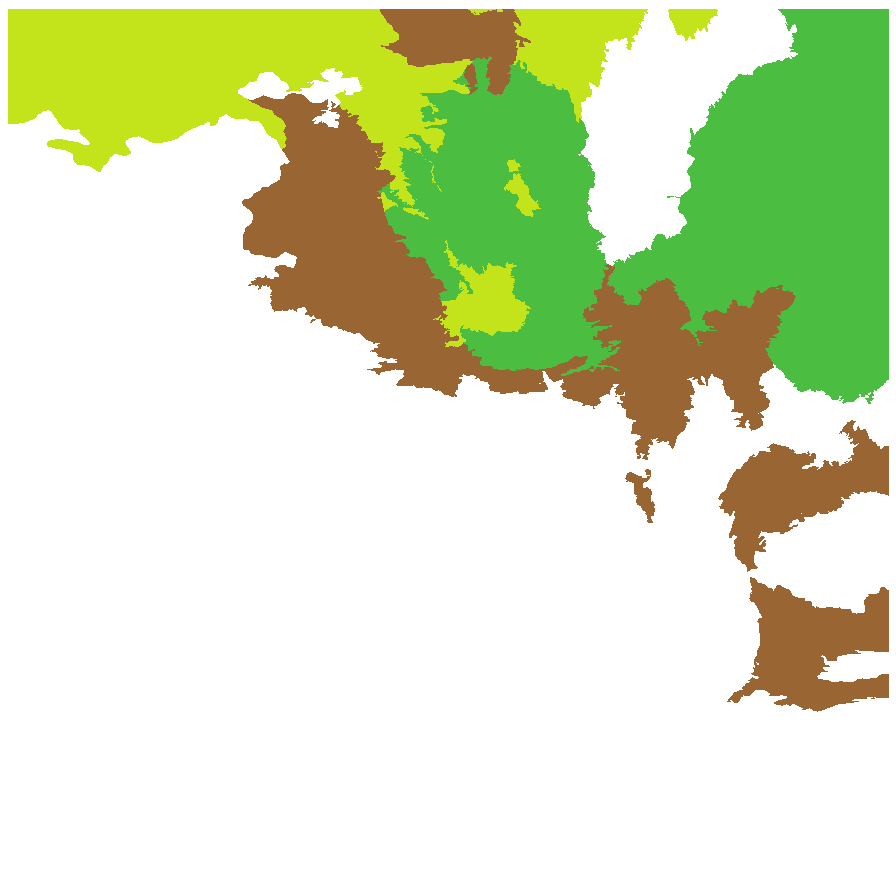
Botanical art
Prior names
Cyperus aristatus
Common names
Bearded Flat-sedge
Etymology
Cyperus from the Latin 'cyperos', derived from the Greek 'kypeiros', an ancient Greek name used by Homer and Theophrastus for several plants of this genus. Squarrosus from the Latin 'squarrosus' meaning having scales or scale-like overlapping leaves or bracts.
Distribution and status
Found in northern South Australia growing in ephemerally wet situations, commonly on sand or alluvium but is also found in relatively dry habitats. Also found in Western Australia, Northern Territory, Queensland and New South Wales. Past records in Victoria but now 'presumed extinct'. Native. Common in South Australia. Common in the other States. Presumed extinct in Victoria.
Herbarium regions: North Western, Lake Eyre, Gairdner-Torrens, Flinders Ranges, Eastern, Murray
AVH map: SA distribution map (external link)
Plant description
Dwarf tufted annual sedge to 15 cm high, with a strong curry odour when dried. Leaves up to or as long as the stems, to 2 mm wide. Flower-spike a simple umbel. Spikelets usually in dense ovate or oblong-ovate spikes, usually brightly coloured in various shades of brown or yellow. Flowering bewteen March and July. Fruits are flat, orange-brown fruit-head in dense clusters. Seeds are black ovoid seed to 1 mm long and 0.3 mm wide, with fine tubercules and covered with a thin shiny transparent layer. Seed embryo type is capitate.
Seed collection and propagation
Collect seeds between March and September. Collect fruits either by picking off the mature heads, those turning an orange-brown colour and come-off easily or pull out the whole plant. Place the heads in a tray and leave to dry for one to two weeks. Then rub the heads with a rubber bung to dislodge the seeds. Use a sieve to separate any unwanted material. Be careful, as the seeds are very small. Seeds are black, ovoid and hard. Store the seeds with a desiccant such as dried silica beads or dry rice, in an air tight container in a cool and dry place. From one collection, the seed viability was high, at 100%.
| Location | No. of seeds (weight grams) | Number of plants | Date collected | Collection number Collection location | Date stored | % Viability | Storage temperature |
|---|---|---|---|---|---|---|---|
| BGA | 400,000 (10.03 g) | 200+ | 11-Mar-2007 | RJB70922 Gairdner-Torrens | 19-Sep-2008 | 100% | -18°C |
Number of plants: This is the number of plants from which the seeds were collected.
Collection location: The Herbarium of South Australia's region name.
% Viability: Percentage of filled healthy seeds determined by a cut test or x-ray.